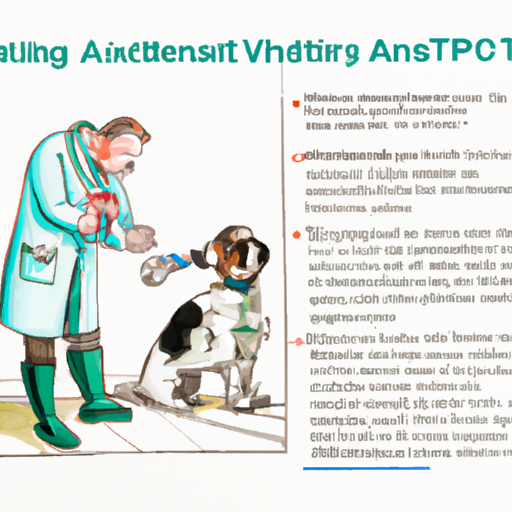Staph infection in dogs is a common health issue that pet owners encounter. It’s caused by the bacteria Staphylococcus and can manifest in a variety of ways, from skin infections to more severe conditions. Early detection and appropriate treatment are key to ensuring your dog’s health and happiness. This article explores the staph infection in dogs, its symptoms, causes, and most importantly, the effective strategies for its prevention and treatment.
Table of Contents
- Understanding Staph Infection in Dogs
- Identifying Symptoms of Staph Infection
- Causes of Staph Infections
- Diagnosing Staph Infections
- Treating Staph Infections
- Preventing a Recurrence
- Frequently Asked Questions
Key Takeaways
- Staph infection is caused by the Staphylococcus bacteria and can lead to a variety of health issues in dogs.
- Symptoms include skin redness, sores, and itching. More severe cases may involve loss of appetite and lethargy.
- Treatment often involves antibiotics, topical ointments, and in some cases, surgery.
- Prevention is best achieved through regular grooming, a healthy diet, and keeping your pet’s living environment clean.
Understanding Staph Infection in Dogs
The first step to effectively manage a staph infection in your dog is to understand what it is. Staphylococcus is a type of bacteria commonly found on the skin or in the nose of dogs. While usually harmless, it can cause an infection when it penetrates the skin through a wound or cut. Here’s a useful guide that provides more insight into the staph infection.
Identifying Symptoms of Staph Infection
Staph infections manifest in several ways in dogs. Common symptoms include:
- Redness of the skin
- Sores or pustules
- Itching and discomfort
- Loss of appetite
- Lethargy
It’s important to be vigilant about these symptoms, as early detection can help in effective treatment. OneTopDog has a great article on the importance of early detection of skin conditions in dogs.
Causes of Staph Infections
Staph infections occur when the Staphylococcus bacteria enters a dog’s body. This can be through a wound, cut, or when the dog’s immune system is weakened due to other health conditions. Allergies, fungal infections, and chronic diseases like diabetes can make dogs more prone to staph infections.
Diagnosing Staph Infections
Diagnosis of staph infections typically involves a physical examination of your dog and a review of its medical history. Your vet may also take a sample of the affected skin area for microscopic examination. Here’s a comprehensive guide on diagnosing staph infections in dogs.
Treating Staph Infections
The treatment for staph infections usually involves antibiotics to kill the bacteria. This can be administered orally or topically, depending on the severity of the infection. In some cases, your vet may recommend surgery to remove large abscesses.
A helpful article on OneTopDog suggests that incorporating regular grooming and a healthy diet can aid in the recovery process. It’s also crucial to follow the vet’s instructions closely and complete the full course of treatment, even if the symptoms improve, to prevent recurrence.
Preventing a Recurrence
Preventing a recurrence of staph infection involves regular grooming, maintaining a clean environment for your dog, and feeding them a balanced diet to keep their immune system strong. Regular vet check-ups can also help detect any potential issues early.
Frequently Asked Questions
-
Can humans catch staph infections from dogs?
While it’s rare, humans can catch certain types of staph infections from dogs. It’s always best to practice good hygiene when caring for a dog with a staph infection. -
How long does it take for a staph infection in dogs to clear up?
With proper treatment, most staph infections in dogs start to improve within a few days to a week. However, it’s important to complete the full course of treatment as prescribed by the vet.
In conclusion, while staph infections in dogs can be worrying, they are generally treatable with the right care and attention. Regular check-ups, a healthy lifestyle, and a clean environment can go a long way in preventing staph infections. For more information on maintaining your dog’s health, OneTopDog has a wealth of resources for pet owners.



